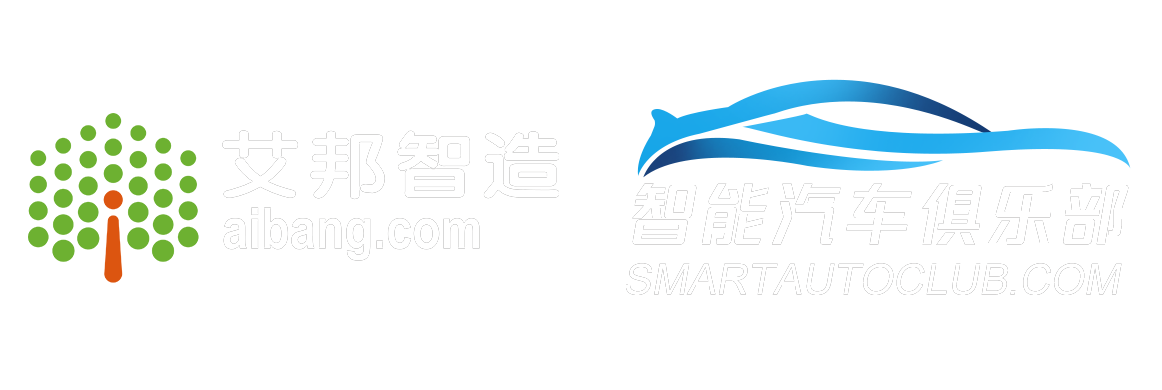The era of autonomous driving, this is what’s happening in the car seat inside the car
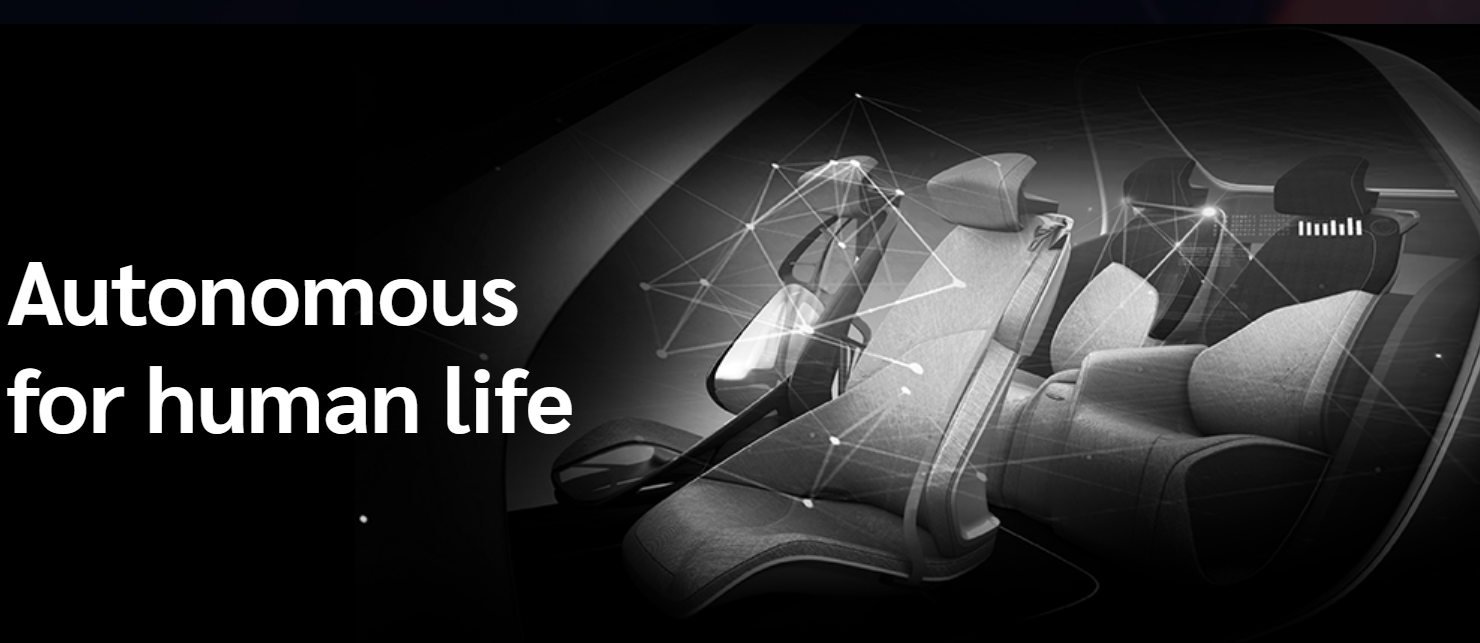
In the era of autonomous driving, drivers can have more time in the car without handling the steering wheel. Everything you do inside the car becomes a part of your life. Seats become the closest company that understand, support, and interact with you. Seats react proactively to every possible movement in a car. At first, the passenger can enter their physical information to set desired functions. Seats then will learn these functions by proactively accepting and analyzing detailed personal information to propose things that the passengers did not notice. Spending longer hours inside the car leads to “safety and health, as well as happiness.” With the more time you will have as you get more comfortable, you will be able to focus on more valuable things. HYUNDAI TRANSYS seat technology directly connects with people.
Designing car seats for autonomous vehicles means embracing future technology entirely. This includes numerous IT technologies such as artificial intelligence that analyzes, learns, and applies countless information on the passenger’s body, network connection that bridges inside and outside the vehicle, and smart devices that connect personalized information.
To predict and reflect future technologies for ideal functions, we need to face the present with clear mind and develop an insight for the future. How to guarantee safety when the driver is not looking ahead? How can the seat react when the driver takes the hands off from the driver’s seat? What kind of rapport should be established for both physical health and mental relaxation of the passengers?
We provide the most ideal intelligent systems for the future mobility environment.It provides convenience and safety to match the user’s physical, mental, and even emotional states.
1、Communication with Seat
In line with the connected vehicle environment, it offers a safe and comfortable driving experience using numerous personalized network information powered from both inside and outside of the car.
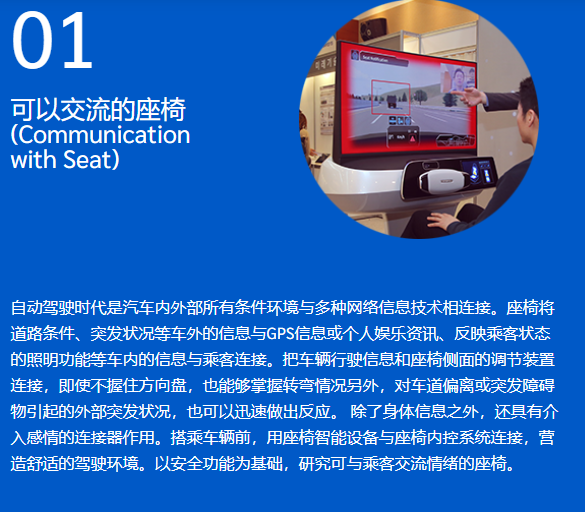
2、Adaptive Comfort
It provides comfort adapting passengers’ physical characteristics with future-oriented technologies such as artificial intelligence and customized independent sound space.
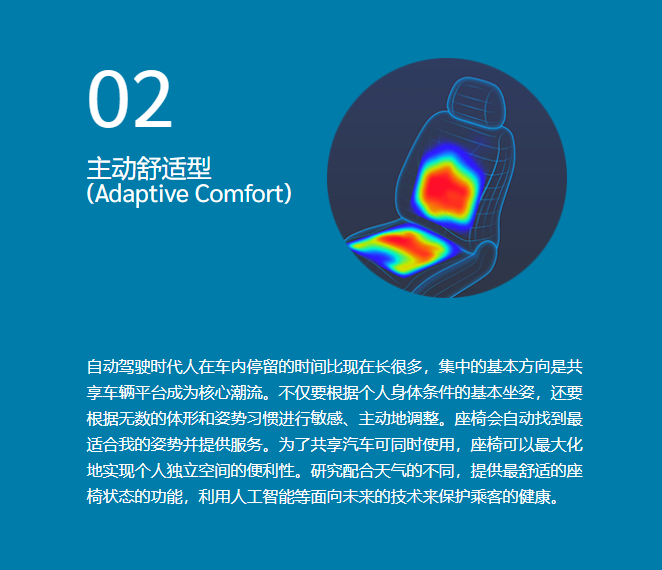
3、Advanced Safety
It considers different driving conditions and provides ultra-lightweight and ultra-high-strength frames, and integrated seat belts for better safety.
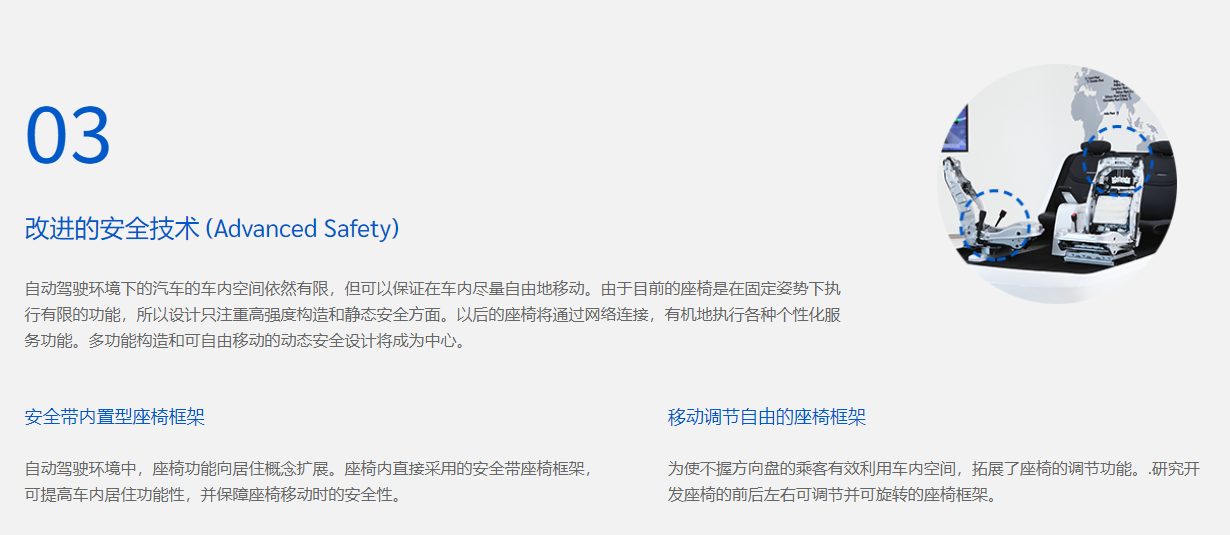
Seat frame with built-in seat belt
In autonomous driving, seat functions expand to the concept of residence. The built-in seat belt frame increases the residential functions and ensures safety when moving the seat.
Seat frame with freedom of motion
The extended seat adjustment function offers better use of space for passengers free from handling. Currently, we are developing seat frames that contain the features to adjust and rotate the front, back, left, and right of the seat.
4、Intuitive HMI (Human-Machine Interface)
It provides an easy and convenient interface that allows users to perforHMI (Human-Machine Interface) various activities without any restrictions In the face of the future mobility environment where driving is no longer necessary.

Integrated armrest seat module technology
The control armrest module is integrated into the seat for improved indoor space utilization. We are studying moving mechanisms that can be operated in various modes such as general driving mode, rest mode during autonomous driving, and seat rotation for communication mode. We are studying control modes that will be convenient and minimizes any distraction elements for the passengers to substitute for the console.
Touch switching technology
It is a simple and intuitive Touch Interaction Switching Module considering the user's point of view for the better use of necessary functions. It can be applied to a variety of surfaces and shapes and also allows proper interactions with the user. Features such as LED lighting and vibration haptics show that such interaction with the users is possible.

